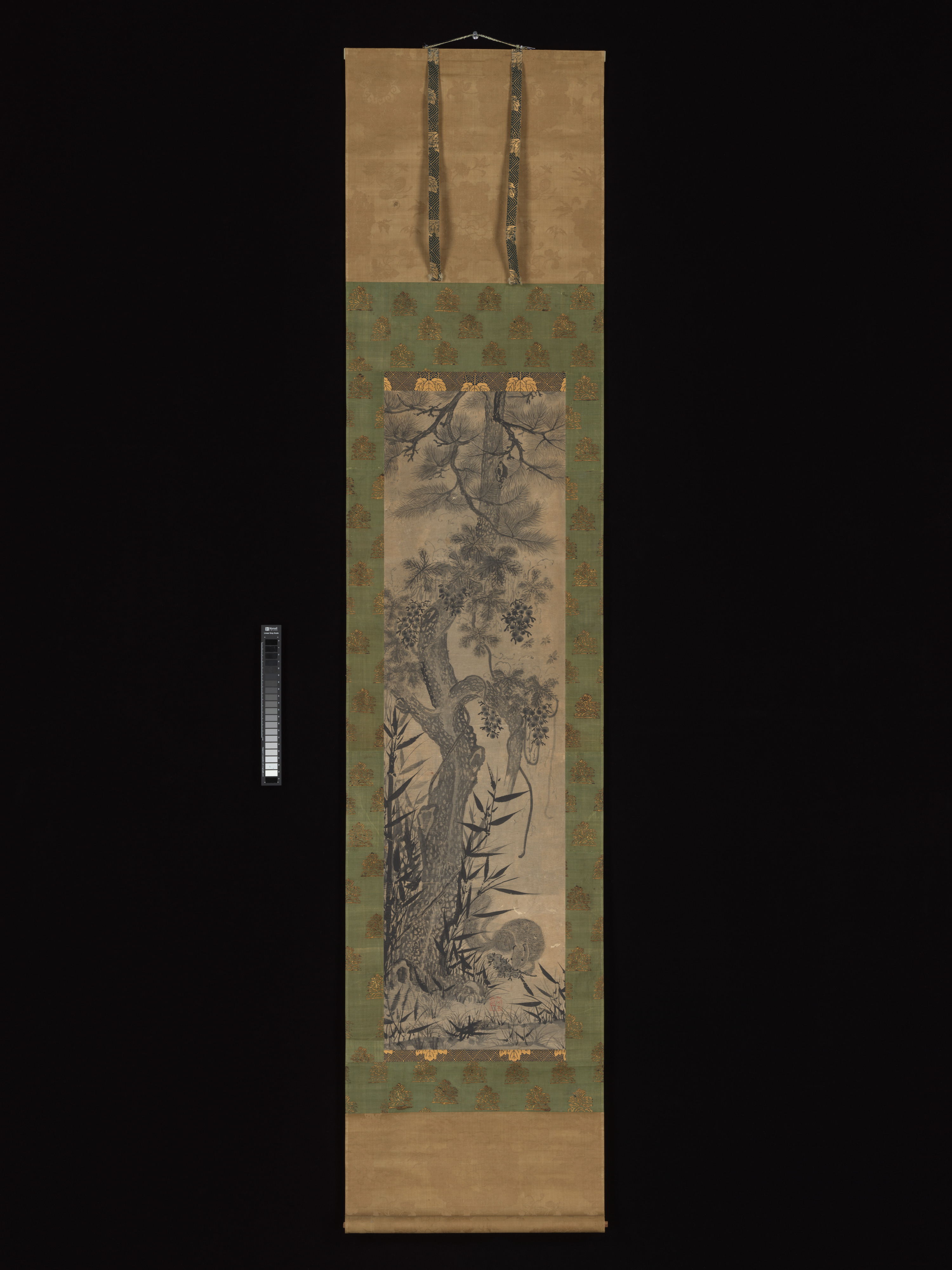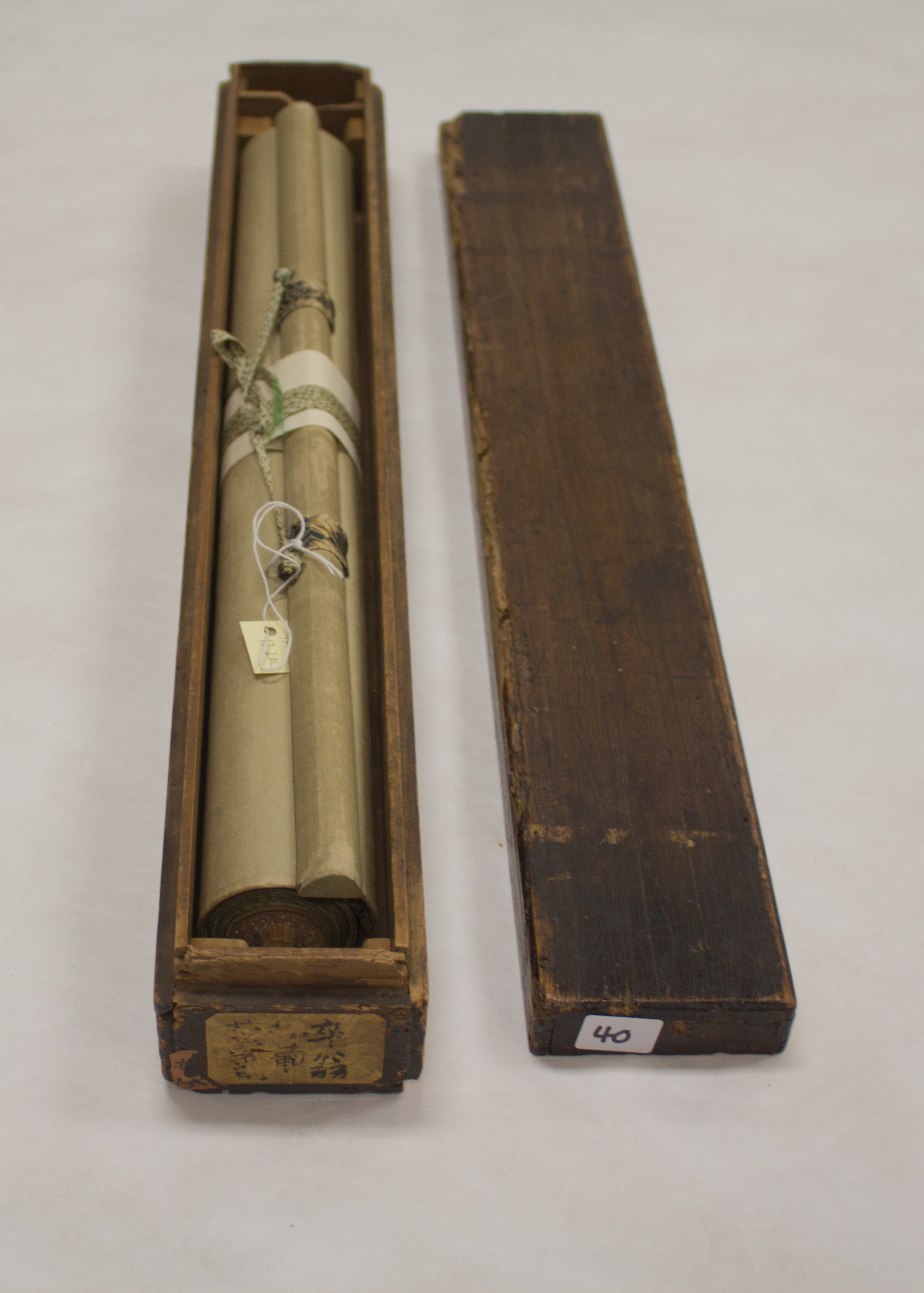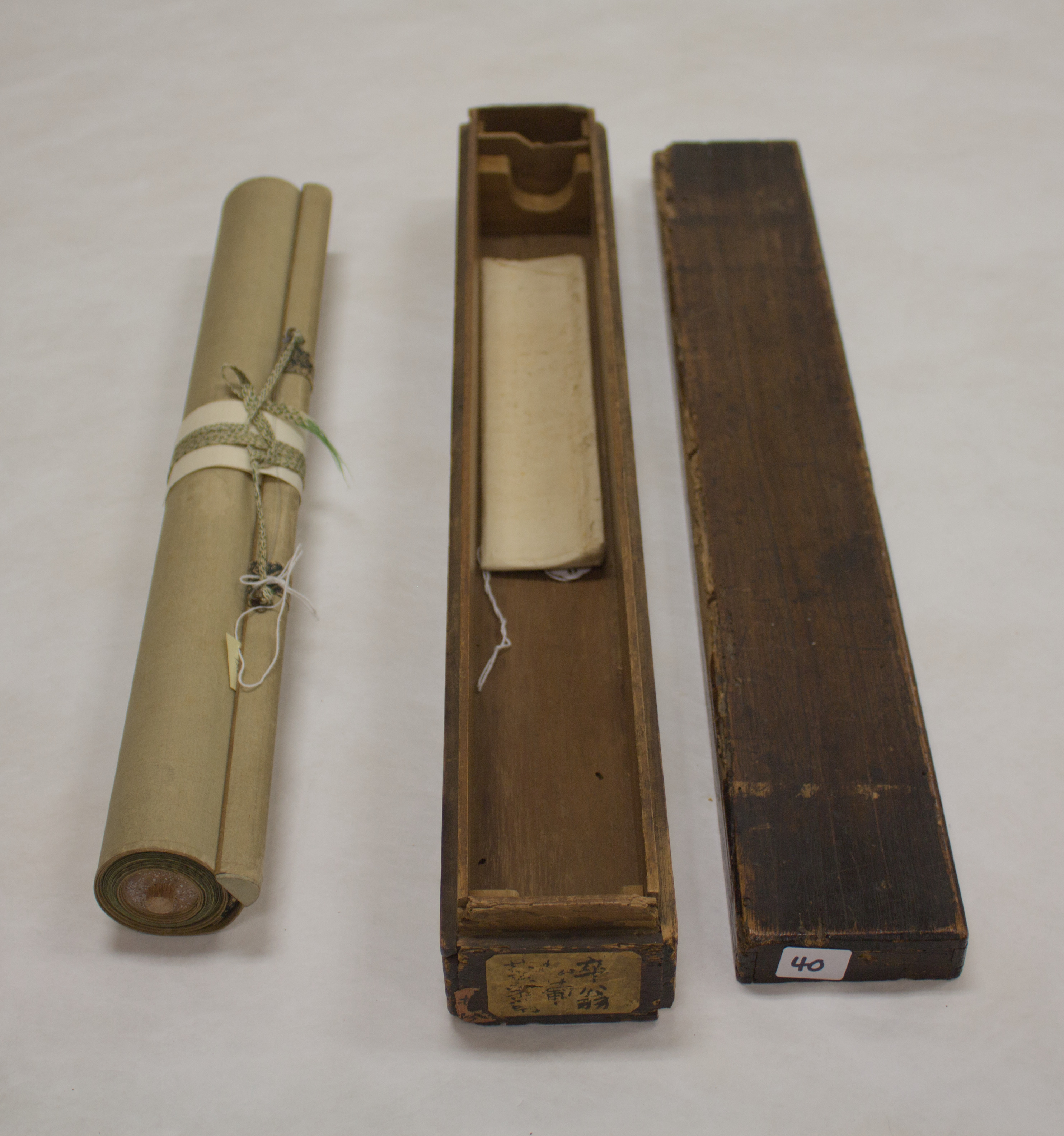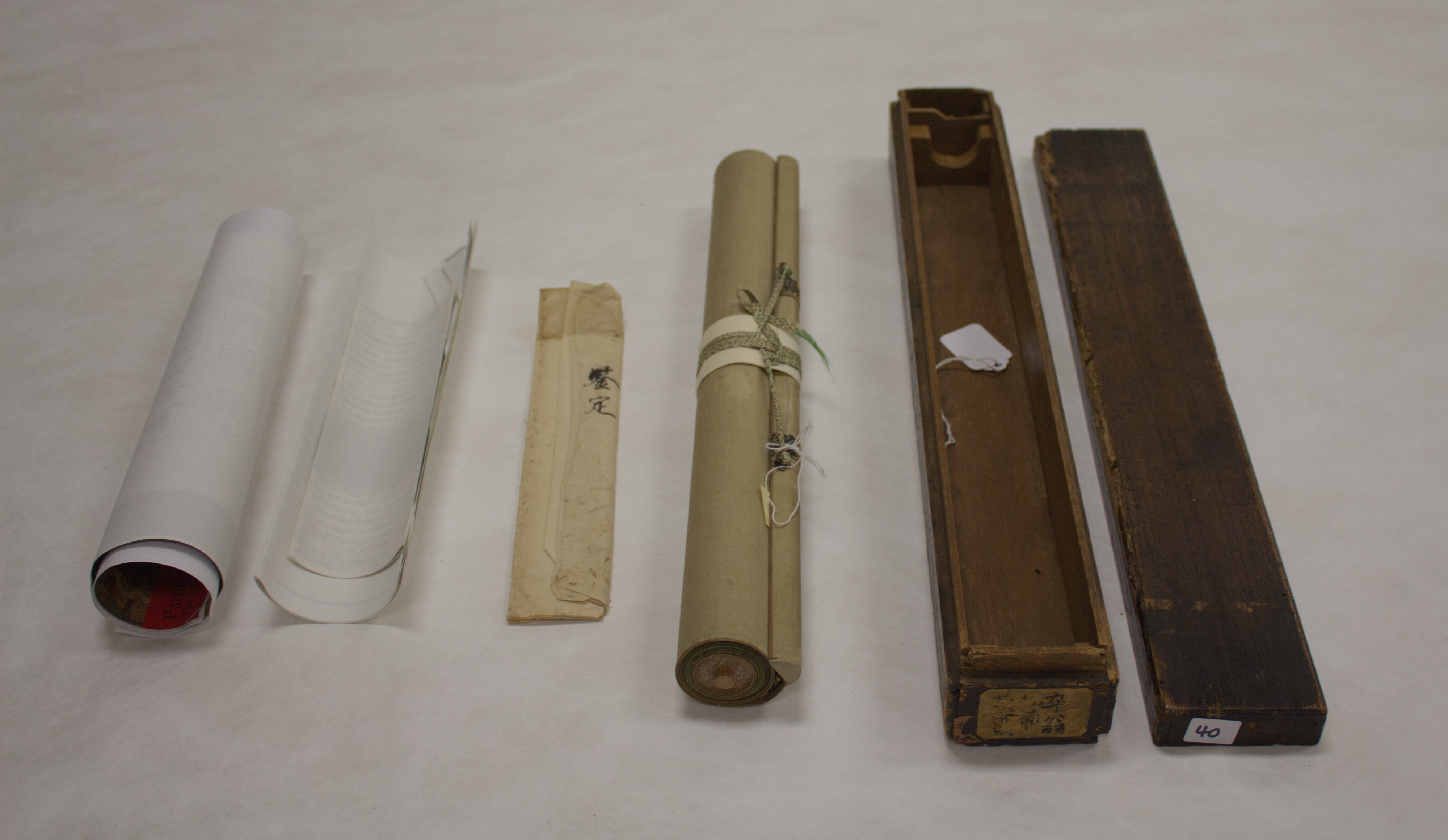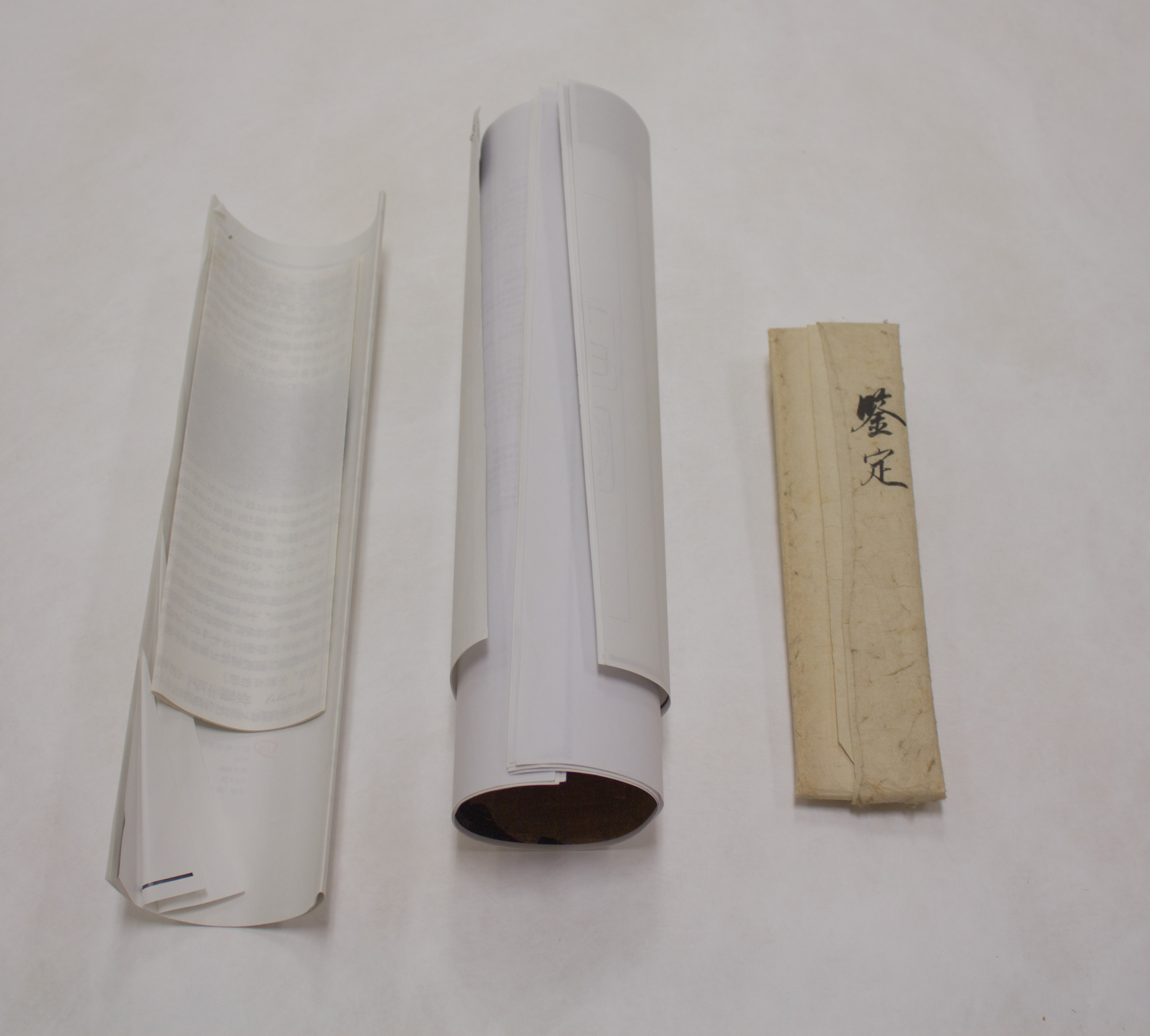Pine, Bamboo, Grape, and Squirrel
Not on view
Over the years, specialists have debated whether this ink painting was created by a Korean artist or by a Japanese artist influenced by continental examples of the theme of grape vines and squirrels. Regardless of its country of origin, the artist has created a delightful image of natural fecundity. The squirrel is eating a bunch of grapes held in place by its left paw Ink washes are used to model the squirrel’s head, body, and tail. Densely applied fine curving strokes and small dark dots had then been scattered across the squirrel’s body to suggest his dappled fur. Oddly, the squirrel seems to have two tails, one large and bushy, the other long and narrow.
This work is also distinctive for featuring a pine tree and bamboo along with the grape vine. The pine’s bark is suggested by a dense array of compressed semicircles painted with a wet brush; its clusters of thin needles are delineated against areas of light ink wash. Grape vines are shown climbing up the trunk of the tree. The grape leaves are executed with a rough and dry brush to suggest their coarse texture. Each grape is painted with layered ink tones to enhance the illusion of roundness. The sweet fragrance of the grapes has attracted three bees. Bamboo stalks have leaves rapidly painted in dark ink, together with lighter leaves behind, to suggest a sense of spatial recession.
The juxtaposition of grapes and squirrels symbolizes family prosperity, a pictorial subject that emerged in the Yuan dynasty (1271–1368) and became popular across East Asia as both a painting theme and a motif on decorative objects, even architecture. While grapes, which entered China through the Silk Road in the Han dynasty, have always been considered an auspicious fruit, the multiplicity of grapes on a branch also came to be associated with fertility. Adorable and prolific, squirrels were similarly associated with having many children. Presumably, the addition of pine and bamboo featured on the current painting represents a later development of the iconography. Evergreens retain their foliage through the cold winter and symbolize longevity and perseverance. Tenacious bamboo implies resilience. The combination of these plants with the playful squirrel gives this painting additional felicitous connotations.
Although the date of execution and country of origin still require further research, the ink painting specialist Itakura Masaaki places this painting in eighteenth- or early nineteenth-century Korea based on its stylistic association with Minhwa 民畵, or Korean folk painting. Other scholars have pointed out that a pair of screens by Tani Bunchō was likely inspired by imported Korean paintings of the same theme. (Kō, 2008).
The inscription on the paper pasted on the side of box indicates that this piece was formerly attributed to a Chinese Chan monk Sotsuon 率翁. This name appears on the list of top-rank painters in the Manual of the Attendant of the Shogunal Collection (Kundaikan sōchōki 君台観左右帳記). A seal reading “Chokuon” (直翁) is impressed on a Chan painting imported from the Southern Song dynasty, which suggests “Sotsuon” 率翁” might be a misreading of the “Chokuon”直翁 seal. It does not, however, line up with the inscrutable seal on this painting. Perhaps the attribution to Chan monk Sotsuon was given because the pictorial theme of grapes was closely associated with the Chinese Chan monk Wen Riguan (See the description of the painting by Bokusai in the Cowles Collection). The style and the addition of pine, bamboo, and squirrel, suggest that this is a much later work.
Due to rights restrictions, this image cannot be enlarged, viewed at full screen, or downloaded.
This artwork is meant to be viewed from right to left. Scroll left to view more.


